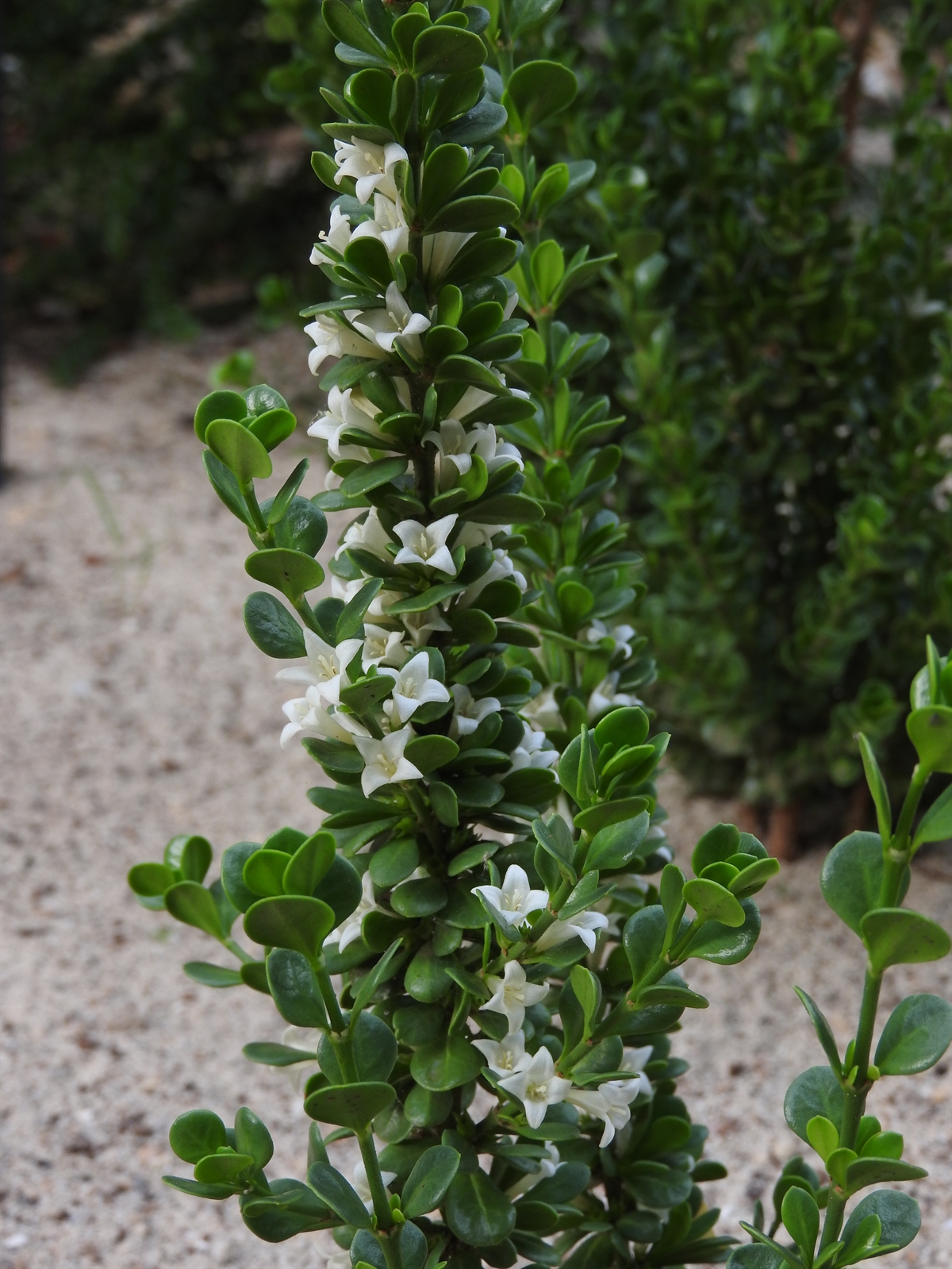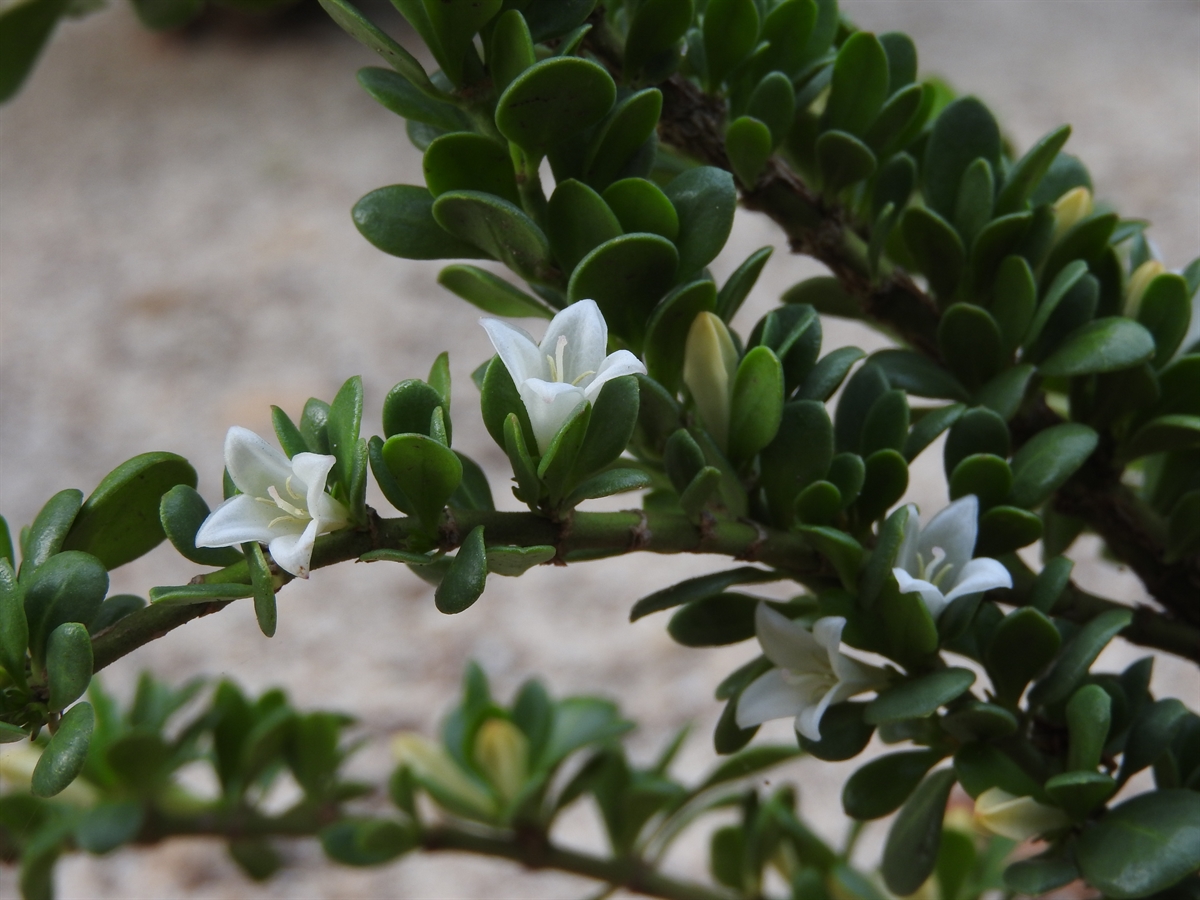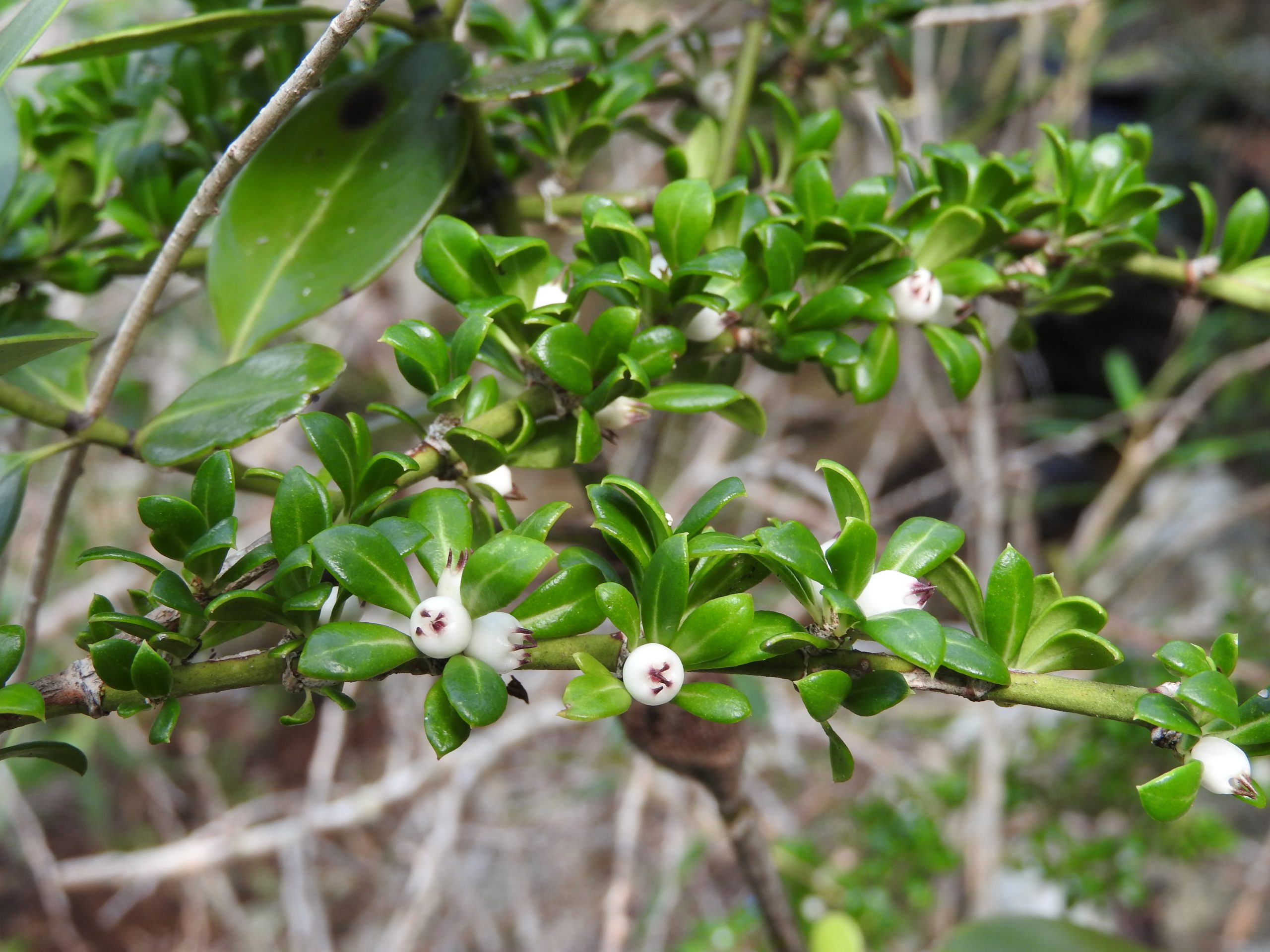Habit: Catesbaea foliosa grows as a slender many branched shrub to small tree up to 2 m in height without spines in leaf axils. The leaves are opposite, up to 2 cm long. The leaves are spathulate to obovate with an entire leaf margin and a rounded or obtuse leaf apex.
The complete, perfect actinomorphic, sessile flowers occur in leaf axils. The calyx and corolla are fused at their base into a hypanthium. The calyx has 4 green glabrous sepals. The corolla has 4 fused, white petals forming a funnelform tube. There are 4 stamens fused to the top of the hypanthium. The inferior ovary has 2 locules and multiple ovules. The fruit is a white berry with 4 red/purple tips surrounding the remnant of the style/stigma.
Habitat: Catesbaea foliosa grows in Dry Broadleaf Evergreen Formations (coppice).
Distribution: Catesbaea foliosa is endemic to the Lucayan Archipelago occurring in the central and southern island groupings.
Medicinal/Cultural/Economic usage: Catesbaea foliosa is not used medicinally in the Lucayan Archipelago.
Catesbaea foliosa is listed as Near Threatened on the International Union for the Conservation of Nature (IUCN) Redlist.


